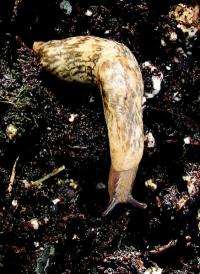Slug ecology and management in no-till field crops

As acreage of row crops managed with conservation tillage increases, more growers are encountering slugs, elevating their importance as crop pests. Slugs can eat virtually all crops, and they are challenging to control because of the limited number of management tactics that are available.
In "Slug (Mollusca: Agriolimacidae, Arionidae) Ecology and Management in No-Till Field Crops, With an Emphasis on the mid-Atlantic Region," a free, open-access article appearing in the Journal of Integrated Pest Management, the authors discuss the species of slugs that are commonly found in mid-Atlantic field crop production and discuss their natural history, ecology, and some of the factors limiting their populations.
The authors also suggest possible cultural, biological, and chemical management options, particularly for corn production, and they suggest elements of a potential integrated management program for slugs.
Over 15 slug species occur in the mid-Atlantic United States, but only four appear to be common in field crops.
The authors provide photos and descriptions of all four to make identification and management easier for growers, and they describe their life cycles as well.
Host plant species, scouting methods, environmental influences, natural enemies, biocontrol options, and management options are also discussed.
More information: esa.publisher.ingentaconnect.c … 03/00000001/art00003
Provided by Entomological Society of America















